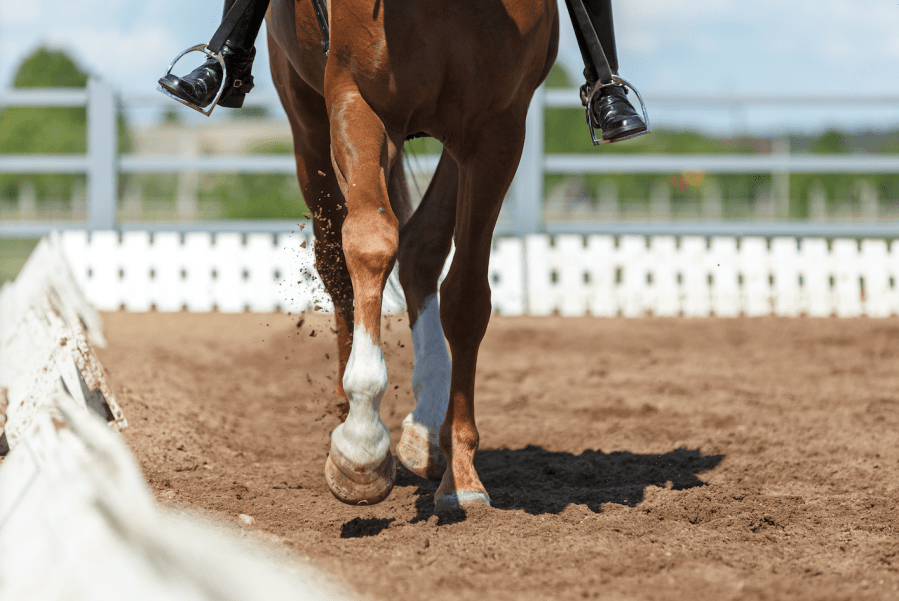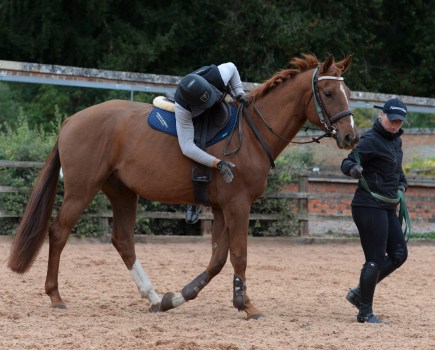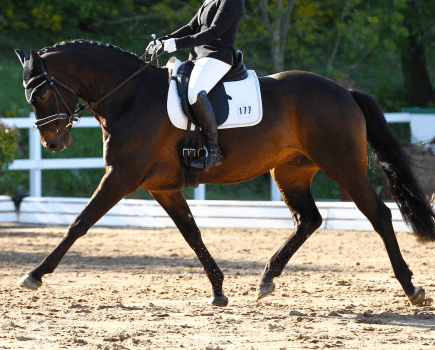When you hear a coach or riding talking about suppleness in flatwork and dressage, it is referring to a horse being able to turn their head, neck and haunches in either direction with equal freedom and range of motion.
Suppleness is the second rung on the Scales of Training, which should form the basis of training for every horse. But just like people, horses naturally favour one side of their body more than the other.
If you find yourself thinking your horse is easier to ride on the left rein than the right, you are referring to their suppleness.
Try turning your head to look over your left shoulder and then do the same over your right shoulder. You will probably find that it’s easier to do this on one side than the other. It’s the same for your horse.
“As riders, we are often stiff in places we don’t even know about and many of us have unconsciously been compensating for years,” says esteemed dressage trainer Ian Woodhead.
“Horses are just the same, yet we often expect them to be able to work on a 20m circle on either rein and stay balanced and relaxed throughout.”
Suppleness and straightness
Ian explains that suppleness is closely linked with straightness.
“Interestingly, a horse who is stiff on one side will struggle to walk in a totally straight line, possibly hollowing one area of their body or leaning slightly on the rider’s hand or leg,” he says.
“Even if this lack of straightness is very subtle, it will, in time, affect the horse’s muscle development and their way of going.
“Suppleness and having equal range of motion down both sides of the body will therefore enable your horse to move with freedom, both in a straight line and when doing more complicated schooling movements.
“For this reason, achieving a relaxed and supple horse should be a priority for riders in all disciplines.”
Signs of a lack of suppleness
Signs that a horse is lacking suppleness under saddle include:
- A reluctance to bend and soften on one rein, and becoming hollow at any pace faster than a walk.
- Resistance to school work in general; running through the contact or resisting the rider’s aids.
- ‘Motorbiking’ around the circle on one rein when being lunged.
- Finding an exercise (even one as simple as a raised trotting pole) much easier on one rein than the other.
Below are two leg-yielding exercises from Ian to help improve a horse’s suppleness.
Leg yielding on a circle
How to do it
- Once you have warmed up, begin by working on a 20m circle in either walk or trot.
- When you have settled into a rhythm, decrease the circle to 10m, then increase the size to 20m again by leg yielding out.
- While doing this it’s important to ensure that your horse is travelling forwards and sideways, with a soft bend away from the direction they’re travelling in.
- Don’t forget to work on both reins. You’ll probably notice that your horse struggles more on one side, but it’s important to practise on both reins equally.
If you’re working in a field or arena with a fence line, you can also make good use of the corners by asking for a 10m circle in each one. According to Ian this is a great test of suppleness, as well as the bend through the corner.
Leg yielding on the straight
When training, it’s better to ride leg yield with your horse’s body completely straight and parallel with the side of your training space, rather than with a slight flexion (which would be required for a dressage test).
This is because it’s very easy to use too much inside rein and forget that the outside rein is the one that controls your horse’s outline.
How to do it
- Go large around the outside of the arena.
- Choose a three-quarter line and turn on to it. After a few straight steps, leg yield to the outside track.
- Next time, come down the centre line and leg yield to the outside track.
Develop the exercise by leg yielding from the outside track all the way across the arena to the opposite corner.
You can also incorporate 10m circles at the beginning, middle and end of any exercise to test the consistency of the roundness and suppleness of your horse throughout.









